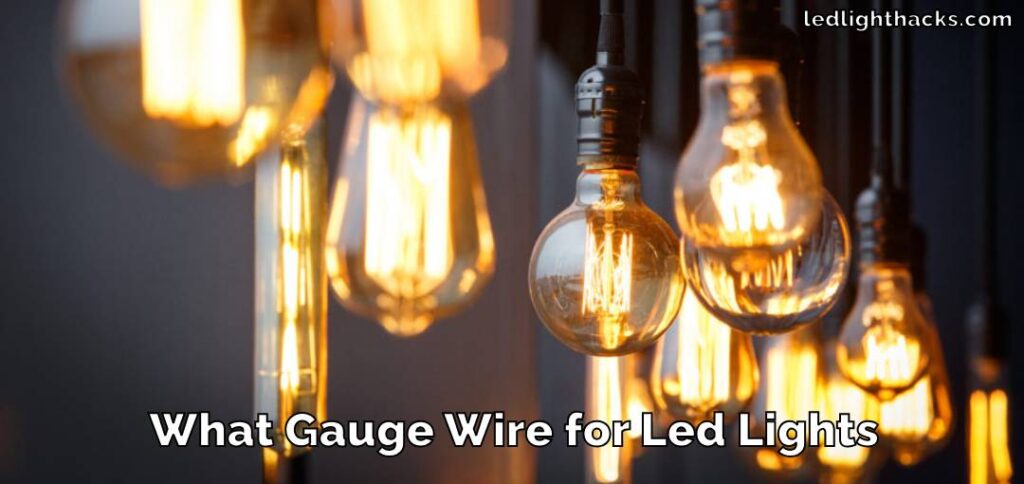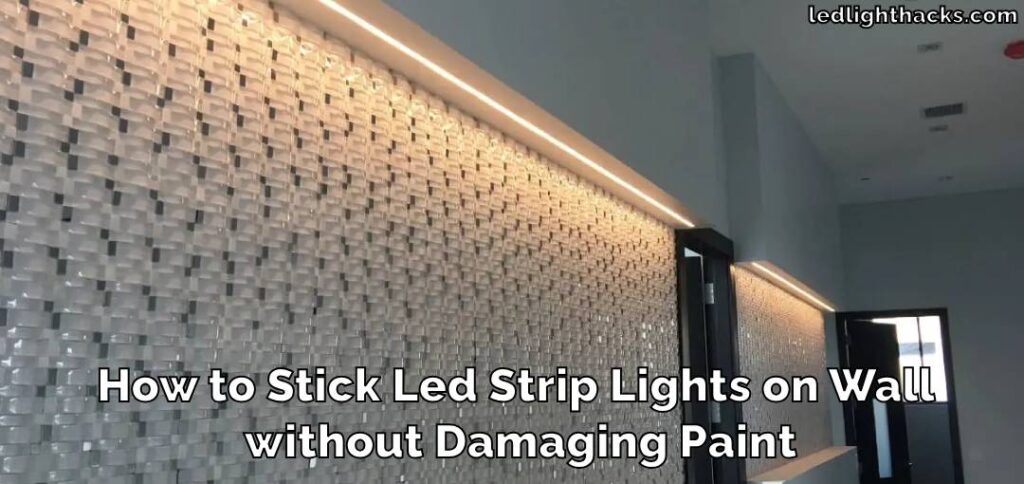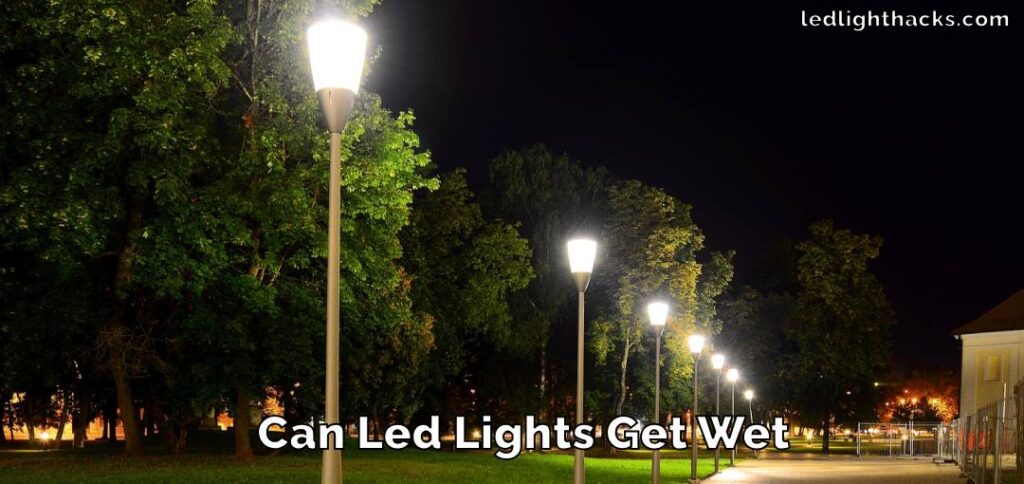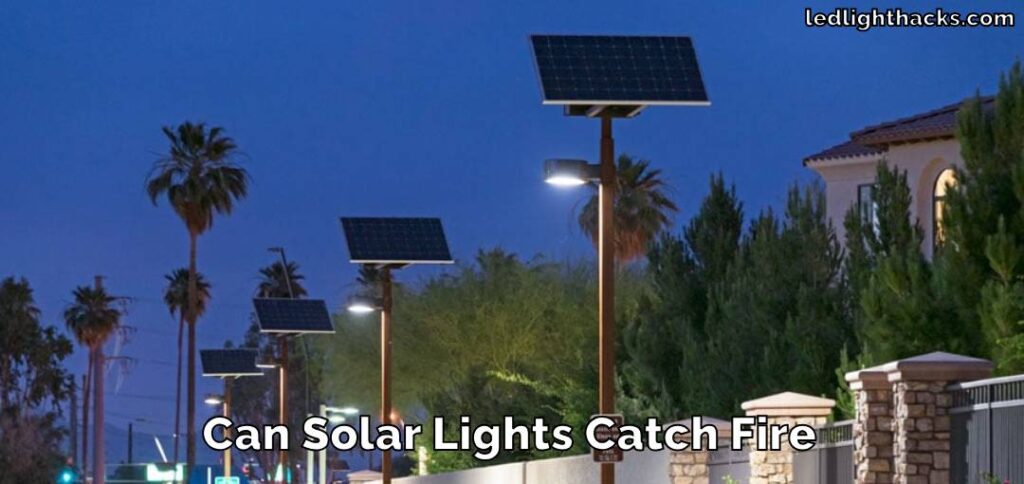What gauge wire for LED lights
When diving into LED lighting, one aspect that might not catch your eye at first is the wire that connects everything together. Yet, this seemingly small component is crucial for ensuring that your LED lights not only illuminate your space effectively but also do so efficiently and safely over time.

Choosing the appropriate “What gauge wire for LED lights” is vital for optimal lighting setups.
What gauge wire for LED lights
For LED lights, a 22-gauge wire is commonly used, especially for low-voltage applications. This size offers a solid balance between flexibility and durability, making it ideal for most LED setups.
When setting up LED lights, the choice of wire is a detail you can’t afford to overlook. The right wire ensures your LED setup is not only bright and effective but also safe and durable. There are two primary types of wires you might consider:
Stranded Wires
Imagine a rope made from many small threads; that’s what stranded wires are like. They’re a bundle of thin wire strands twisted together to form a single wire. This structure gives them a lot of flexibility, making them perfect for places where the wire might need to bend around corners or be threaded through tight spaces.

Their flexibility is a big advantage for installing LED lights in those hard-to-reach spots without worrying about the wire breaking down over time.
Solid Core Wires
On the other hand, solid core wires consist of a single, solid strand of metal. Think of them as a straight stick rather than a flexible rope. They’re great for jobs where the wire won’t be moving around much after it’s installed, like in walls or fixed structures. Their main benefit is their strength, making them a reliable choice for permanent installations where you want everything to stay put.
No matter which type you choose, paying attention to the wire’s insulation is crucial. Insulation acts like a protective jacket for the wire, shielding it from physical damage and preventing the risk of electrical shorts or shocks.

Insulation materials vary, with some designed to withstand harsh outdoor conditions and others optimized for indoor use, focusing on longevity and resistance to wear and tear.
Let’s not forget about voltage drop and current carrying capacity—two technical aspects that are equally important:
- Voltage Drop refers to the decrease in electrical voltage as it travels along the wire. Over long distances, this drop can make your lights dimmer than you’d like. By choosing the right gauge and type of wire, you can minimize this loss, ensuring your LEDs shine brightly across any distance.
- Current Carrying Capacity is about how much electrical current the wire can handle safely. As you add more LEDs, the system’s demand for power increases. It’s essential to select a wire that can support this demand without overheating or posing any safety hazards.
For practical guidance, here are some example wire gauges you might consider, depending on your specific needs:
- 18 AWG for short runs with low-power LEDs. This gauge is thin and flexible, suitable for small, simple installations.
- 16 AWG for medium-length runs or higher power requirements. It strikes a good balance between flexibility and capacity.
- 14 AWG or thicker for long runs or very high-power LED arrays. These wires are best for ensuring minimal voltage drop over long distances and supporting the current required by powerful lighting setups.
Remember, the goal here is not just to install lighting but to do so in a way that is efficient, safe, and suitable for your specific situation. By understanding the different types of wires and their characteristics, you’re well-equipped to make informed decisions for your LED lighting projects, ensuring they meet your expectations in terms of brightness, efficiency, and reliability.
Choosing the Right Gauge Wire
The thickness of your wire, or its gauge, is crucial for effectively transmitting electricity from your power source to your LEDs. Here’s how to ensure you pick the right one:
Know Your LEDs’ Current Draw: Familiarize yourself with the power your LEDs require, generally listed in amperes (A) or milliamperes (mA) in the product specs. This is the first step to understanding the demand for your lighting system.
Distance Matters: The further your LEDs are from the power source, the thicker your wire should be to prevent voltage drop—a thinner wire over a long distance could lead to dimmer lights or even non-functional ones.
Consult a Wire Gauge Chart: Armed with information on your LEDs’ power needs and the distance from the power source, a wire gauge chart can guide you to the ideal wire thickness. This ensures your lights perform efficiently and brightly.
Incorporating terms like solid wire, circuit breakers, and power supplies into your planning process is just as important. These elements, along with considerations like ground wire, voltage drop calculator, and understanding the maximum current your setup can safely handle, play integral roles in the success of your lighting project.
Paying attention to American Wire Gauge (AWG) standards, ensuring you have the correct size wire and neutral wire, and understanding the basics of wiring will further ensure your project’s success. Whether you’re working with AC Circuits, recessed lighting circuits, or ensuring compatibility with remote control and dimmer options, every detail contributes to creating a lighting environment that’s not only appealing but also safe and sustainable.
By selecting the appropriate wire for your LED lights—taking into account factors like electrical codes, light output, circuit requirements, and the material of the wire—you’re setting the stage for a lighting solution that meets your needs perfectly. Remember, the aim is bright, efficient, and reliable lighting, achieved through careful consideration of every component in your system, right down to the wire.
LED Voltage and Current
Let’s expand on this crucial information, breaking it down into a chart format to make it even clearer and more accessible:
| Consideration | Description | Why It’s Important |
| Know Your System | Understand the specific voltage and current your LED lights require. This is similar to knowing the water pressure and flow rate for a garden hose. | It ensures your LED lights function optimally and are compatible with your electrical setup. |
| Prevent Problems | Focus on selecting the appropriate wire gauge to avoid voltage drop (electricity loses strength over distance) and overheating (wire can’t handle the current). | Preventing these issues means brighter lights, lower risk of damage, and avoidance of potential hazards. |
| Match Wire to Needs | Consider the length of the wire run and the total current draw of your LED setup. Different setups require different wire thicknesses. | A correctly sized wire supports the electrical load safely, preventing overheating and ensuring efficient operation. |
| Safety and Performance | Ensuring the right wire gauge isn’t just about functionality; it’s about keeping your lights, home, and yourself safe while maintaining optimal brightness and longevity of your lights. | Proper wire selection safeguards against electrical risks and ensures your lighting performs as expected without premature failure. |
Thinking of wire gauge selection as planning a journey helps illustrate the importance of preparation. Before starting your lighting project, understanding the specific requirements of your LED system is like mapping your route.
This preparation ensures you choose the right “vehicle” (wire gauge) for your journey, guaranteeing a smooth and safe ride from start to finish.
By investing time to grasp the needs of your LED lighting, you avoid unnecessary trouble, enhancing the brightness and safety of your project. This thoughtful approach to wire selection lays the foundation for a successful lighting installation, emphasizing that the right choices lead to the best outcomes.
Step-by-Step Guide to Choosing the Right Gauge
Selecting the right gauge wire for your LED lighting setup is a critical step not only for the performance and longevity of your lights but also for promoting sustainability and energy efficiency. Let’s walk through a straightforward guide to make this decision as easy as pie:
Step 1: Determine the Total Current Draw of Your LED Setup
Begin by understanding how much current your LED lights require to function optimally. This detail is crucial as it directly influences the amount of electrical power your setup will use. You’ll find this information measured in amperes (A) or milliamperes (mA) within the specifications of your LED products.
Step 2: Consider the Length of Your Wire Run
Reflect on the total distance your wires will need to cover to connect all the LEDs. Electrical current weakens over extended lengths, potentially dimming your lights or causing inconsistent performance.
Step 3: Opt for Thicker Wires for Extended Distances
To combat issues like dimming or flickering, choosing thicker wires for longer runs is advisable. Thicker wires are better at transporting electricity efficiently over distances, ensuring that your LEDs maintain their brightness and reliability.

Step 4: Use a Wire Gauge Chart for LED Lighting
Consult a wire gauge chart tailored for LED lighting setups. These charts are invaluable as they guide you in selecting the appropriate wire thickness by considering the current requirements of your LEDs and the length of the wire run. Following such a chart ensures you pick the best wire gauge for your project, striking the perfect balance between efficiency and luminosity.

By adhering to these steps, you’re setting the stage for a successful LED installation that champions both sustainability and energy efficiency. Now, let’s delve into why making the right choice in wire gauge transcends mere functionality and steps into the realm of environmental stewardship:
The Environmental Impact of Choosing the Right Wire Gauge
Selecting the appropriate wire gauge extends beyond ensuring optimal light performance; it plays a significant part in environmental conservation. Here’s how:

Environmental Friendliness: Opting for the correct wire thickness is a conscious decision that benefits the planet by minimizing unnecessary energy consumption.
Energy Loss Reduction: Accurate wire size selection helps prevent energy wastage, a key factor in reducing our overall energy footprint.
Supports Eco-friendly Practices: This choice aligns with broader efforts towards sustainability, highlighting the importance of resourceful living.
Contributes to Greener Lighting Solutions: By focusing on such details, we contribute to developing solutions that are not just effective but also eco-conscious.
Utility Cost Savings: Efficient energy use translates into lower electricity bills, offering financial savings alongside environmental benefits.
Part of a Larger Environmental Effort: Choosing the right wire gauge is a small, yet impactful, step towards achieving larger environmental goals, emphasizing the importance of mindful resource utilization.
Integrating considerations such as the need for a 2-3 times larger heat sink in certain conditions, accommodating cold weather heat efficiency, or the intricacies of binary number systems in digital circuits including amp circuits and actual circuits, enriches the depth of planning required for a sophisticated LED setup.
Whether dealing with commercial fixtures, and ceiling lamps, exploring the nuances between single color strips and RGB strips, understanding the specifics like wattage per foot, employing amp fuses for circuit protection, and using corner connectors for seamless installation, each detail plays a pivotal role in crafting a bright, efficient, and sustainable lighting solution.
Moreover, embracing circuit simulation tools can provide insights into the actual circuits used, ensuring that every component, from brighter LED strips to amp circuits, works harmoniously within the intended design, all while adhering to sustainability principles and promoting energy efficiency.
The journey towards a well-lit and eco-friendly space is marked by informed choices at every step, from wire selection to the integration of advanced LED technology, ensuring that our lighting solutions shine a light on a brighter, more sustainable future.
Conclusion
Selecting the right wire gauge for LED lights might seem daunting, but it’s a crucial step in ensuring the efficiency, safety, and sustainability of your lighting system. By understanding the specific needs of your LED setup and following a guided approach to choosing wire size, you equip yourself with the knowledge to make informed decisions.
This not only leads to a better lighting experience but also contributes to more sustainable and cost-effective energy use. Remember, the key lies in preparation, understanding your needs, and using the right tools for the job.
Read Also – Are spiders attracted to LED lights?
How to Change a Light Switch without Turning Off the Power
Mastering the skill of changing a light switch without turning off the power holds great…
How To Stick LED Strip Lights On Wall Without Damaging Paint
LED light strips have surged in popularity, adorning homes and spaces with their vibrant colors…
Can Led Lights Get Wet
LED lights are everywhere, from homes to city streets, known for their efficiency and brightness….
Creative Ways to Use LED Strip Lights in Your Home
LED strip lights, those brilliant strips of technology, serve as a beacon of innovation in…
Can Solar Lights Catch Fire
Solar garden lights are your go-to pal for lighting up your backyard oasis while keeping…
What gauge wire for LED lights
When diving into LED lighting, one aspect that might not catch your eye at first…





